Modern society is built on the backs of tens of thousands of years of human beings surviving off of hunted and foraged food. Identifying and foraging for wild edibles is a skill that almost every human being still has the ability to cultivate. Most of us today don’t have years of experience honing our plant identifications skills. This article will highlight 5 plants that are easy to find and identify as well as being nutritious. The number one goal when foraging for survival is to maximize calorie consumption. This is not an easy task by any means, especially if you have very little time to prepare and store food for later. I don’t want to create a false narrative that if you know these 5 plants(or any 5 plants) then it will be easy to live off the land. Knowing this information will hopefully help you enough to survive long enough to prepare a hunting system or better yet, get you out of the woods and back home.
The plants mentioned here aren’t single species but rather categorized by genus which is a group of very closely related species, for example blackberries and raspberries are in the same genus. The types of plants chosen here can be found on every continent in the northern hemisphere and most of them also in the southern hemisphere excluding Antarctica of course. I’ll go over how to identify these plants and how to prepare them for consumption.
1. Oaks and Stone Oaks(Genus:Quercus and Lithocarpus)
Oaks and Stone Oaks are a phenomenal wild edible for survival, they are calorie and protein rich, produce abundantly and store well. The edible part of the Oak tree is the nut inside the acorn. The downside with Oak trees is that some lengthy preparation is required for most species. Also some species are much better suited for harvesting and preparation then others.

The edible acorn is also the tree’s number one identification feature. It is true that many oak trees have unique leaf shapes but there is no single rule regarding leaf shape that can confirm identification. The acorns are produced and drop to the ground in the fall in temperate climates. Other areas may have different life cycles.
Where I live the 2 most common oak species are red oak(Quercus rubra) and white oak(Quercus alba). Both of these are great oak trees for harvesting because they drop large abundant acorns. When harvesting almost any species the acorns will need to be prepared. This requires shelling them then leaching out the bitter tannin that is in the acorn. The first step is to harvest the acorns right after they fall, you can harvest them later but often insects and decay get to them over the course of a few weeks to months. For small batches the best thing to do is just cut them in half or quarters and pull out the edible part from the inside of the shell, then discard the shells. Next crush the acorn ‘meat’ with a rock or mortar and pestle. The goal is to get as close to a powder as possible. Then you have to find some way of leaching the ground acorns by washing them continuously with cold water(hot water tends to cook the tannins into the acorn ‘meat’). A common method is to pour cold water through a mesh bag containing the ground acorns multiple times. If You can set up a system where water continuously runs over it then it will be less effort on your part. Some people have traditionally put a sack of ground acorns in a river or stream and let the running water do the work. Once the acorn powder is leached of most tannins it’s ready to consume or save for later. Cooking is recommended to kill any bacteria from preparation or less than ideal storage.
2. Wild Onions and Garlic (Genus: Allium)
The genus Allium is a very interesting genus, it contains all types of onions, garlic, leeks, chives and shallots. These plants grow extensively in the northern hemisphere in temperate climates. There is one very reliable identification feature and it must be used because there are toxic look a likes to some Allium species. The reason this is a good survival plant is because the bulb is the calorie storage unit for the plant and this is one of the parts that we consume, although the entire plant is edible as well. Some caution should be advised because eating large amounts of certain Allium species can cause stomach upset. There are toxins in the plant but humans have evolved to tolerate them whereas other animals like cats and dogs have not.
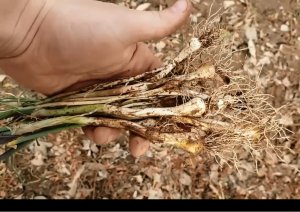
All Alliums are herbaceous plants with an underground bulb. Leaf shape is not a very good identification feature. Leaf shape varies dramatically from wide and flat to hollow and tubular. There are some very toxic look a likes such as lily of the valley (Convallaria majalis) and death camas (Toxicoscordion venenosum). The absolute best identification feature for Alliums in general is their fragrance when crushed. To confirm that you’re dealing with an Allium crush a leaf or bulb and smell it. It almost always smells distinctly of onion or garlic. If it does not or you are unsure then discard it. It’s better to discard a true Allium then to accidentally eat a toxic look a like.
All parts of the plant are edible but different parts are best to harvest at different times. In my area the 2 most common species are crow garlic(Allium vineale) and the ramp(Allium tricoccum). The ramp (aka wild leek) is unique in that it does not reproduce quickly and therefore has been over harvested in some of its area. There is a ban on harvest imposed by certain local governments. Be mindful of any restriction that your region might have. Typically Allium species are growing the most vigorously in spring and fall in temperate climates. It’s traditional to harvest and plant bulbs in the fall but as mentioned before, all parts are edible all the time. In my opinion Allium flower tops and bulbils(mini bulbs sprouting from the flower tops) are an excellent part of the plant to forage for and are underutilized.
3. Raspberries and Blackberries (Genus: Rubus)
Blackberries and raspberries are familiar to most of us but many people are unaware that there are hundreds of unique wild species growing worldwide. Besides for being called blackberries and raspberries other names given to members of this genus are dewberries, wineberries, salmonberries, thimbleberries and brambles.These fruits are not particularly high in calories but do offer a tasty addition to your harvest. Another foraging secret regarding these species is that most of them have edible stems and leaves when young. They do not become toxic but as the thorns and stems harden the stems quickly become more difficult to prepare and consume.
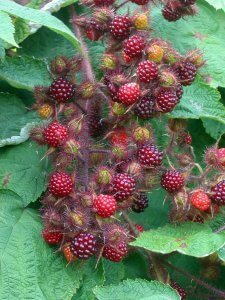
These plants are easy to identify when the berries are present in the summer. The berries will always look like blackberries or raspberries. Botanically this means that they are aggregate fruits being a combination of multiple separately pollinated tiny seeds covered in fruity flesh. Other fruits like mulberries also look like this but rubus fruits are the only ones that look like this along with a thorny non-woody stem. Plants in the rubus genus grow in a number of different forms such as arching shrubs, ground-trailing vines and colonies of upright stems. These plants typically do not grow as woody shrubs, trees, or vertically climbing vines.
In my location there are at least 5 distinct species of rubus that I come across on a regular basis including multiple species of blackberries, wild black raspberries(Rubus occidentalis), at least 2 species of dewberries, and wineberries(Rubus phoenicolasius). The berries ripen at different times of the year ranging from early summer to late summer. The stems also harden off at different times of year and have varying levels of bitterness when eaten. Stems can also be peeled of their skin and thorns then boiled to consume. You will likely get more calories from the stems then from the fruit but you will likely get more nutrients from the fruit then from the stems.
4. Wild Cherries and Plums(Genus: Prunus)
This is another single genus that includes many species that are familiar to people such as cherries, plums, peaches and nectarines. The seeds of all wild Prunus fruits should not be eaten. They contain the toxin hydrogen cyanide and could potentially result in death if a number of seeds or stems are thoroughly chewed and consumed. This genus also includes almonds but wild bitter almonds contain much higher concentrations of hydroden cyanide in the seed than domestic almonds. It is not recommended to consume wild bitter almonds. For all plants in this genus except for the almond the fruity flesh covering the seed is eaten. Domestic almonds are a variety selected for less of the toxin. The Prunus genus is a large group of plants with edible berries that are native to temperate climates of the northern hemisphere. These fruits often grow plentifully on a tree and can add a substantial fruity flavor to foraged meals. Wild cherries for example were a staple wild fruit for native american tribes. It was used in pemmican which is a high calorie portable native american food made from animal fat and dried fruit.
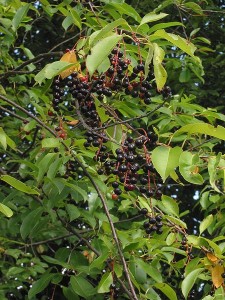
The first step to identifying wild Prunus fruits is to first confirm that the fruit is indeed a botanical drupe. A drupe which is also called a stonefruit contains 1 single seed covered by the fleshy part of the fruit. This identification feature is important because it will help distinguish Prunus fruits from others like glossy buckthorn (Frangula alnus). keep in mind that wild Prunus fruits are often much smaller than their domesticated relatives. Prunus trees have leaves that are simple(no lobes) with a finely serrated(toothed) leaf margin. Another common occurrence with Prunus trees is the presence of a disease called black knot. Black knot forms a black gnarly growth on twigs and stems. Not all individuals will be infected with black knot but seeing a tree infected with black knot will aid in your identification because that disease only affects trees in the genus Prunus.
I am personally familiar with 2 species of wild growing prunus plants in my area. These are the black cherry(Prunus serotina) and the chokecherry(Prunus virginiana). These 2 species look very similar and have a very similar life cycle with slightly different fruit ripening times in the summer. Another difference between these 2 species is that black cherry typically tastes better than chokecherry. Even the black cherry fruit flavor does naturally range from very bitter to not very bitter. If you find a tree with a pleasant taste you can return there every summer year after year. Both species are very common within their range which is another reason they could reliably be utilized by native americans.
5. Pine(Genus: Pinus) and Spruce(Genus: Picea)
These edible evergreens are extremely underutilized plants. The mature needles may be too unpleasant to eat right off the tree but there are a number of edible parts of these trees. These edible parts contain significant calories and are harvested when other foods aren’t available like in winter and early spring. You’ll often hear that you can make a tea out of the needles from these plants, although that is true it is the least interesting edible component of these trees in my opinion. On most species of both pine and spruce you can eat the immature female cones during the winter. You can also eat the male catkins(with pollen) and young foliar growth in the spring. Another edible component that is often overlooked is that the inner bark of any part of the tree is edible. This is one of the best trees to eat the inner bark, although the bar isn’t raised very high since inner tree bark is usually tough and bitter with only a few exceptions. I should mention that a few pine trees such as ponderosa pine(Pinus ponderosa) and lodgepole pine(Pinus contorta) needles contain toxins. Despite that the inner bark and immature cones still have a history of being used as survival foods.
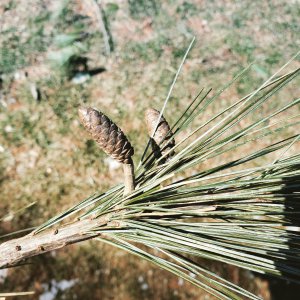
Identification of plants in each of these 2 genera is unique to that genus. Pines are typically distinguished from other evergreens by their parallel grouped needle. Different species have different numbers of grouped needles. For Example White Pine(Pinus strobus) has 5 parallel needles per grouping. Spruce have single needles coming direcly from the branchlets and stems, this is not a good identification feature since other evergreens such as fir and douglasfir look very similar. I’ve created these Youtube videos to help you identify pine, spruce, fir, and douglasfir. The good news is that fir and douglasfir have similar edible properties to spruce. Do not mistake the very toxic Yew(Genus: Taxus) for any of the edible evergreens. Yews may look superficially similar but once you learn the identification features then you can easily tell the difference.
A few of the species that I am most familiar with on the east coast US are eastern white pine(Pinus strobus), norway spruce(Picea abies), and colorado spruce(Picea pungens). In temperate climates the immature cones tend to be optimal for harvest and consumption in late winter and early spring. The cones are 1″-2″ in length at this time. The immature cones seem to be one of the highest calorie edible parts of this tree. In the spring and summer they quickly dry and get too hard to eat. When spring arrives you can eat the edible new growth as long as it is soft enough to eat. They are still edible later in the year but are just too hard to be enjoyable. The edible inner bark of the tree can be harvested and eaten anytime but is best when the tree is not in drought conditions. To harvest the edible inner bark you will need to damage a trunk or branch so don’t go around ripping bark off trees haphazardly. Only do this in survival situations or on trees that are being removed anyways. Pine and Spruce are very common in temperate and northern climates around the world so you should be able to start getting familiar with these species in your local neighborhood.
Conclusion
Many cliche portrayals of people living off the land show them living off of berries indefinitely. Although I have included berries in this list anyone in a survival situation will benefit from the knowledge that you can also prepare the stems of blackberry and raspberry bushes to be eaten and that these stems are likely more calorie rich. Anyone needing to survive off the land will also benefit from the other foraging secrets I’ve revealed here such as all the edible parts of a pine or spruce tree and how to definitively identify a wild Allium. It’s hard to find calories in survival situation but hopefully you’ll be a little more equipped after reading this.
Many of our readers find that subscribing to Eat The Planet is the best way to make sure they don't miss any of our valuable information about wild edibles.
See our privacy policy for more information about ads on this site

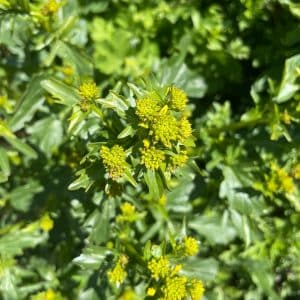
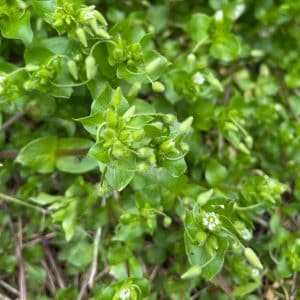
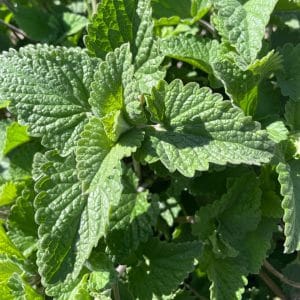


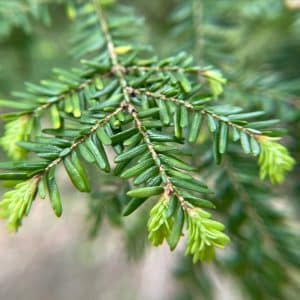
3 Responses
I ate some Rubus Trivialis near a pine tree farm in the Ocala region. They’re good — in fact in my opinion superior in taste compared to the black berries that are sold in stores.
certain species of pine (usually the ones with longer needles) also contain pine nuts! it takes a bit of work to get to the nut, but a couple of stones and a careful application of force will net you a valuable source of fat and protein. one pine cone can contain up to 100 nuts! the cones can also be reliably used in starting a fire – arguably one of the most important things to ensure when in a survival situation
certain species of pine (usually the ones with longer needles) also contain pine nut